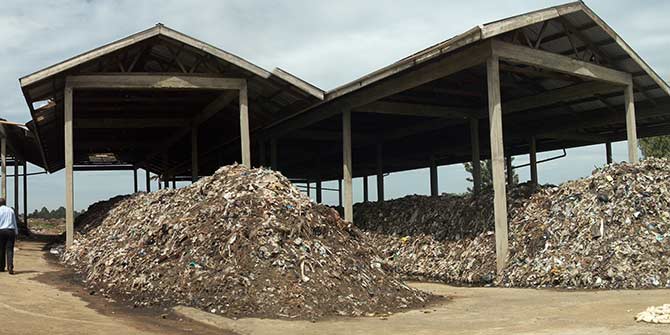LSE alumnus, Andrew Fleming is a Senior Researcher at the Cape Town Partnership in South Africa. In this post, he recounts how gentrification is changing the face of one of Cape Town’s oldest suburbs.
In many formerly run-down urban neighbourhoods around the world, the emergence of new shops, chic restaurants, and upmarket residential properties seem to contribute further fodder towards discussions surrounding neighbourhood gentrification—for good or for bad. And so it is with Woodstock, South Africa’s first suburb and one of the few areas in Cape Town that avoided apartheid’s infamous Group Areas Act, a 1950 law that banned non-whites from the vast majority of South Africa’s urban centres. Immediately bordering Cape Town’s central business district, Woodstock’s property prices have been on the rise since the late 1980s—but it’s only in the past several years that the telltale signs of gentrification—pricey restaurants, “neighbourhood” markets, and the emergence of a curious new “gentry”—have really surfaced.

Woodstock’s origins are rooted in the need for city-based, working-class housing for the dockworkers, industrial employees, immigrants, and other 18th-century Cape Town labourers. This working-class population continued to live in Woodstock well into the 20th Century, supported by a strong local manufacturing industry. Despite the fallout of manufacturing in the 1970s, Woodstock has stayed a strongly working-class neighbourhood in Cape Town’s central city, providing urban housing and economic opportunities for many who would otherwise have to live on Cape Town’s perimeter.

Nowadays, Woodstock’s property prices are rising fast as the allure of prime urban land plots, old Victorian houses ripe for renovation, and the growing “shabby-chic” characteristic of the working-class area attract a new, wealthier crowd to the neighbourhood. Between 2004 and 2010, Woodstock’s average house sale price rose from ZAR 391,723 to ZAR 715,022, placing the neighbourhood outside the definition of “affordability” in South Africa and beyond the financial reach of most of the country’s population. The price differentials have resulted in the neighbourhood becoming ever more exclusionary for the element of South Africa’s population that established the neighbourhood’s ever-so-desired “run-down” reputation.

The market pressures are certainly visible, and in South Africa’s current neoliberal economic system, Woodstock’s transformation is anything but surprising. But the neighbourhood must also be recognised as a critical site of housing and opportunity in Cape Town’s central city for lower-income families — neglecting this point would exclude the vital history, community, and housing structures that have made Woodstock what it is today. Looking at different degrees of state-based intervention through affordable housing initiatives would be one of the most effective ways to empower what’s left of the neighbourhood’s lower-income population to remain in the area while promoting inclusive economic growth and development.
Developing denser housing designs, government-subsidised GAP/”Affordable” housing projects, and more efficient housing use on state-sponsored land re-developments—all with direct community input—are all ways that both government and private developers could assist. More inclusive architectural designs and more integrated human settlements need a focus as well: Walled-off neighbourhood markets and fortified apartment blocks all send a very telling message to an excluded population. But what’s also needed in Woodstock is a larger shift in understanding—developers, residents, consumers, government, and others all need to recognise what this process of gentrification means for Woodstock’s community development. If left unchecked, the continuing price increases in Woodstock will result in further urban exclusion and segregation in a city that so desperately needs to fight against apartheid’s lingering legacy of separated cities.
You can follow Andrew Fleming on twitter: @AndrewSFleming





1 Comments